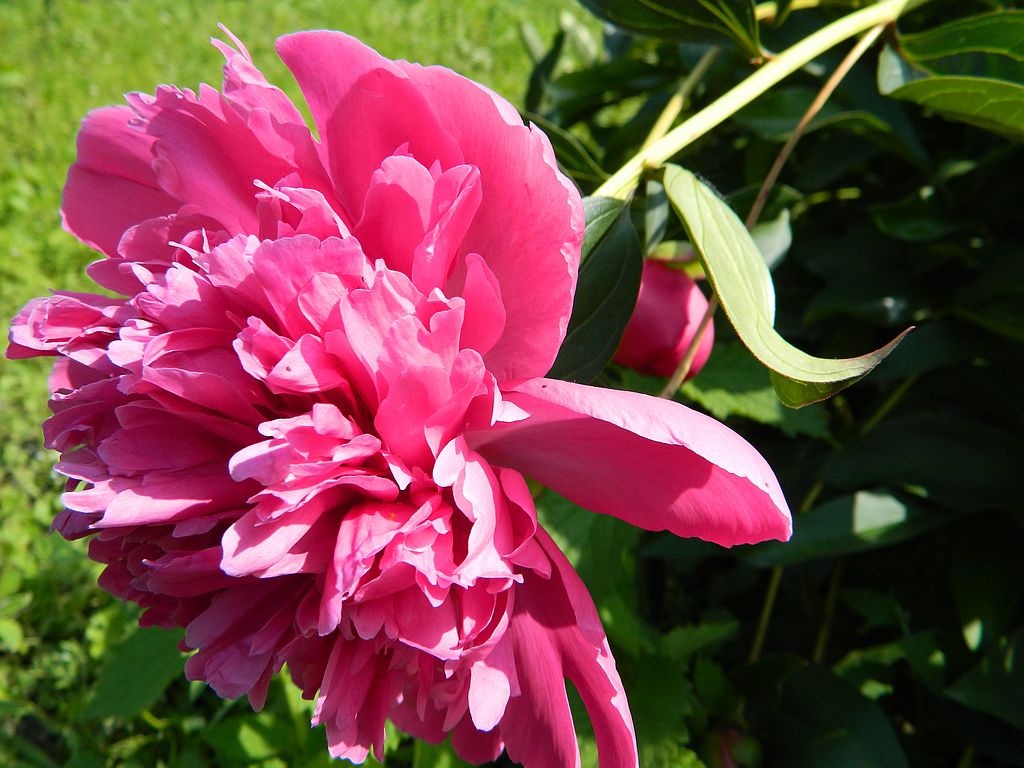Big, beautiful blooms make peonies a Memorial Day tradition

COLUMBIA, Mo. — In the 1800s, peonies were one of the few flowers in bloom in late May. After the Civil War, mourners used peonies to adorn the graves of fallen soldiers on Decoration Day, which we now call Memorial Day.
The huge, lavish blooms emit a luscious floral perfume that continues to make them one of America’s most treasured garden flowers, said University of Missouri Extension horticulturist David Trinklein.
Cultivated for more than 4,000 years, peony has served as a food source and a medicine to treat ailments ranging from gallstones to seizures.
Peony is the common name for plants in the genus Paeonia. In Greek mythology, Paeon was a student of Asclepius, the god of medicine and healing. When Asclepius threatened to kill Paeon in a jealous rage, Zeus rescued Paeon by turning him into a flower.
Most peonies planted today are hybrids of species native to Asia, southern Europe and western North America. Garden peonies grow as bushy herbaceous perennials. They grow up to 3 feet tall. Their deeply lobed leaves and extravagant, delightfully fragrant flowers fan out up to 6 inches in diameter and come in a myriad of colors.
Peonies need plenty of room. Plant them 3-4 feet apart in a fertile garden loam and full sun, Trinklein said.
Peonies tend to be long-lived, so good soil preparation before planting is important. Incorporate well-decomposed organic matter 10-12 inches deep in the general area, and make individual holes wide enough to spread roots well. Add a modest amount of fertilizer high in phosphorus, such as 5-10-5 or bone meal, and mix well into the soil.
Shallow planting works best for peonies, Trinklein said. Flowering is reduced or inhibited when growing points of the crown are set more than 2 inches below the soil’s surface.
Peonies often flourish in the garden even when undisturbed for 20 or more years. Divide if growth is poor and plants fail to bloom after years of performing well, said Trinklein.
Fertilize peonies sparingly. Excessive fertilizer, especially nitrogen, leads to poor flowering. If top growth slows and plant vigor declines, apply several tablespoons of a complete fertilizer high in phosphorus and potassium, such as 6-24-24, about 6-18 inches away from the crown. Trinklein says fall application is preferrable, but early spring is satisfactory.
Peonies are relatively pest-free and rarely require pesticide applications. Some people mistakenly believe that ants are necessary for peony flowers to open. Peonies draw ants because of the sweet exudates of the buds. Ants do not harm the flower in any way, said Trinklein. In fact, the ants may fend off floral-feeding insects.
Learn more in “Ants on Peony Flowers: An Example of Biological Mutualism,” Missouri Environment & Garden newsletter, at ipm.missouri.edu/MEG/2018/5/AntsOnPeonies.
Miss Clipping Out Stories to Save for Later?
Click the Purchase Story button below to order a print of this story. We will print it for you on matte photo paper to keep forever.

